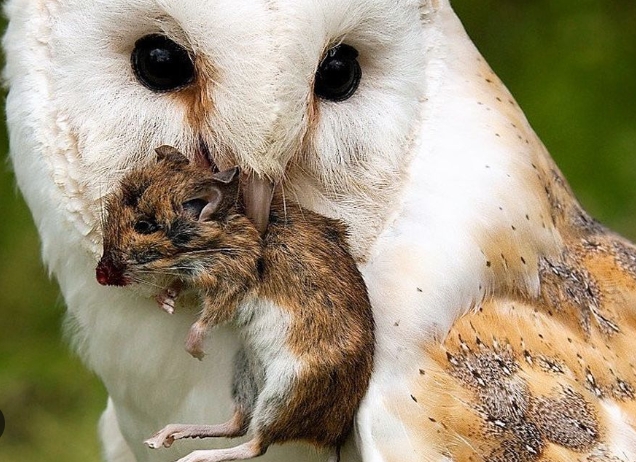Barn owls are fascinating creatures that are known for their silent flight and distinctive heart-shaped facial disc. But did you know that these majestic birds also have some interesting eating habits? Let’s take a closer look at the secret life of barn owls and how they satisfy their voracious appetites.
Hunting Techniques: Stealthy Predators
Barn owls are nocturnal hunters, meaning they are most active during the night. They use their keen sense of hearing to locate small mammals such as rodents, voles, and mice. With their silent flight, they are able to stealthily swoop down on their prey without making a sound.
Diet: Rodents Galore
These silent predators mainly feed on small mammals, with rodents making up the majority of their diet. Barn owls are known to consume a large number of rodents each year, making them valuable allies for farmers as they help control pest populations.
Feeding Habits: Devouring in Darkness
Barn owls typically swallow their prey whole, regurgitating indigestible parts such as bones and fur in the form of pellets. These pellets can often be found near their roosting sites and provide valuable insight into their diet and feeding habits.
Feeding Frequency: Hungry Hunters
Barn owls have high metabolisms and therefore need to eat frequently to sustain their energy levels. They may consume several small mammals in a single night to meet their daily caloric requirements.
Breeding Season: Feeding the Family
During the breeding season, which typically occurs in the spring, barn owls must provide food for their young. Both parents work together to hunt and bring food back to the nest to feed their hungry offspring.
Conservation: Protecting a Predatory Partner
Barn owls play a crucial role in controlling rodent populations, making them valuable allies for farmers and ecosystems alike. Conservation efforts are focused on protecting their habitats and preserving their food sources to ensure their continued survival.
In conclusion, the secret life of barn owls reveals them to be skilled and stealthy predators with voracious appetites for rodents. By understanding their eating habits, we can appreciate the important role they play in maintaining ecological balance and controlling pest populations.

